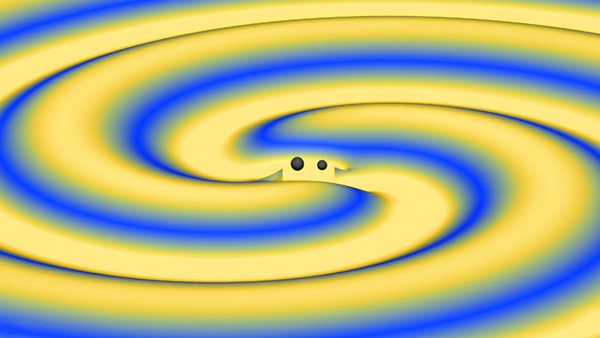This mass was converted to gravitational waves within a fraction of a second. The crazy thing about this is the gravitational wave power emitted during this merger was more than 10 times the combined power in our entire visible universe — meaning the light of every star and galaxy in our observable universe — so it’s a crazy amount of power rippling through space-time!
Let’s go a little more into what exactly is going on here, because gravitational waves are a totally new way to observe the universe, so it’s a little difficult to wrap our minds around it at times. This is even more true when we hear statements (such as above) about the gravitational wave power released. As black holes — and other compact binaries like neutron stars — begin to merge, they orbit each other and send out ripples in space-time, just like two objects spinning around each other in water. As they get closer together, they spin faster, and the frequency of these waves increases. Once they merge, a huge burst of gravitational radiation is emitted, and a single black hole remains that has slightly less mass than the two original ones, primarily due to that huge burst of radiation carrying energy (or the equivalent amount of mass) away.
Now that we can observe gravitational waves, we’re going to learn so much more about the structure of objects like neutron stars and black holes through observing how much mass is lost in the form of gravitational wave energy when they merge.
Erin Macdonald
Ph.D. Astrophysics,
Technical Advisor and Consultant,
Los Angeles










